 |
 |
 |
 |
 |
 |
 |
 |
 |
 |
 |
| Last Updated: Mon Feb 11 18:47:58 UTC 2019 |
 |
 |
 |
 |
 |
 |
 |
 |
 |
 |
 |
| Last Updated: Mon Feb 11 18:47:58 UTC 2019 |
| Australian Suburban Wildlife (Page
III) |
 |
|
Mundane
as
Australian
suburbia
might
be,
we
often do get interesting visitors. This multi-part web page contains a selection
of recent
suburban wildlife
pictures of interest, many from test shoots with professional equipment.
Photos and text ¿ 1997-2011 Carlo Kopp; Photographs produced using a Fuji S5600 5.1 MP, Fuji S5800 8.0 MP, Fuji HS10 10.3 MP, Mamiya 645/1000S and Nikon D90.
|
| |
|
Noble Park and Keysborough, Victoria |
 A
neighbour's four year old Maine Coone on the fence
(22/06/2011 D90 / 18-55 mm DX).
|
|
Reading Topics on Domestic Cats vs.
Australian Environment
The widely held and often
fervently believed view that domestic and feral cats are a scourge upon
the environment and the leading cause of extinction in native species
does not have a strong, if any, rational evidentiary basis. If the
scientific evidence suggests anything, it is that the belief is more an
urban myth with a large and very vocal following. Indiscriminate
destruction of native Australian habitats by the expansion of
residential and agricultural land would appear to be a more pervasive
and stronger cause of native species loss in Australia. The history of
European civilisation in Europe and the Americas would support that
proposition.
Demonising hapless animals such as cats and dogs is not rational behaviour, but it is evidently popular behaviour, with a rich history dating back to medieval times. If you care about native species, help restore their habitats, and do not believe urban myths no matter how appealing or persuasive they might appear to be. |
|
|
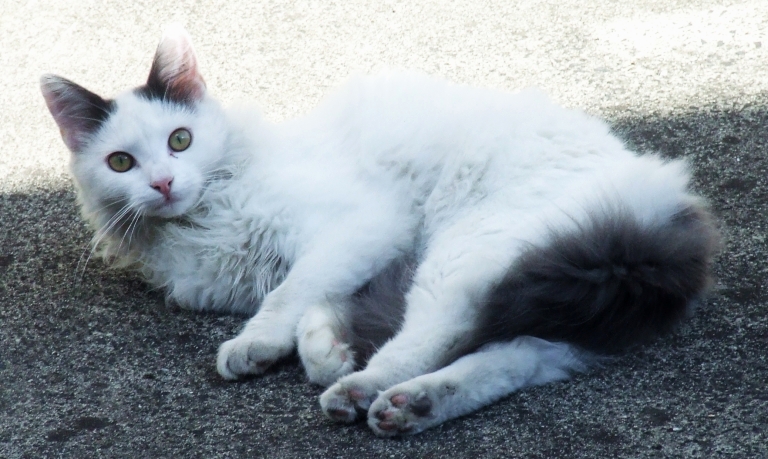 Domestic
cats
are
abundant
in Australia, in urban, rural and outback environments. They
are agile and highly intelligent predators. Suburban cats may be pets,
abandoned pets or feral. Despite being well fed, cats will often hunt
for enjoyment. This young Maine Coon tomcat, owned by a neighbour,
decided to pose for the camera
(19/04/2007).
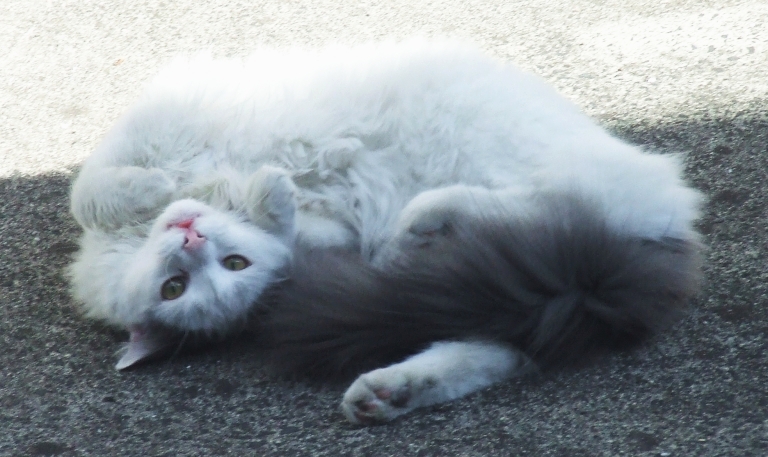 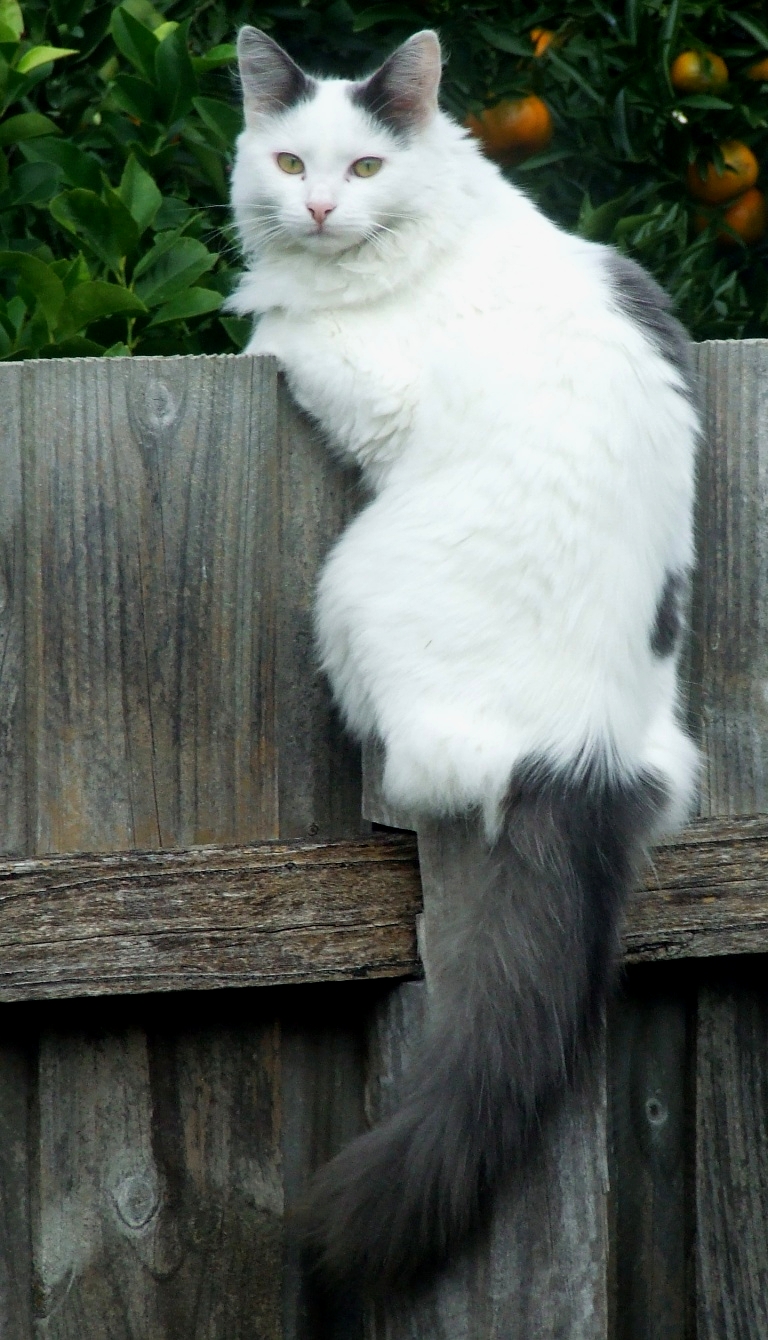 Maine
Coone
display (07/05/2007)
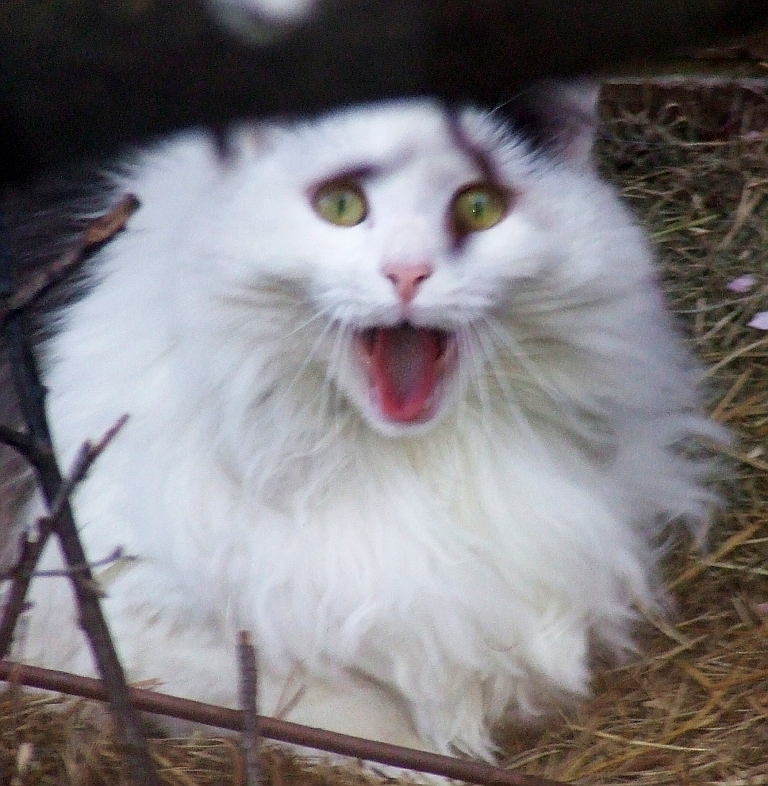 Maine
Coone
yawning
(06/09/2007)
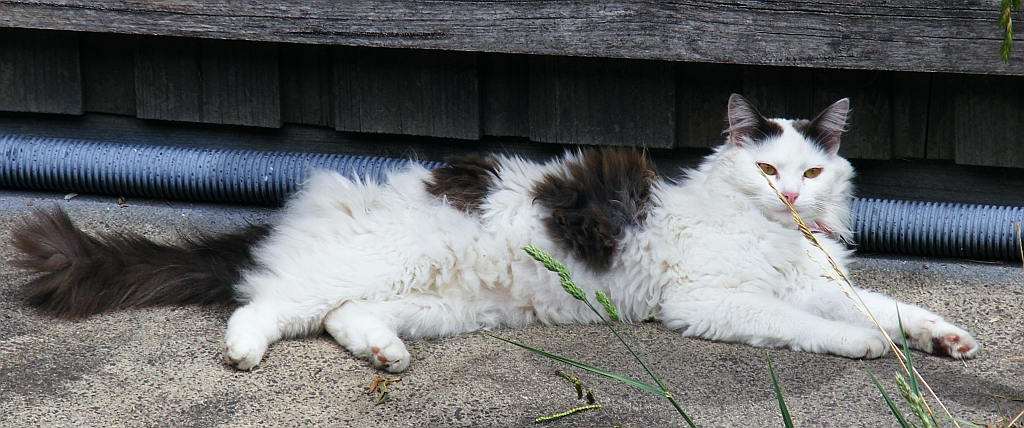 A
neighbour's Maine Coone loafing
(09/12/2008)
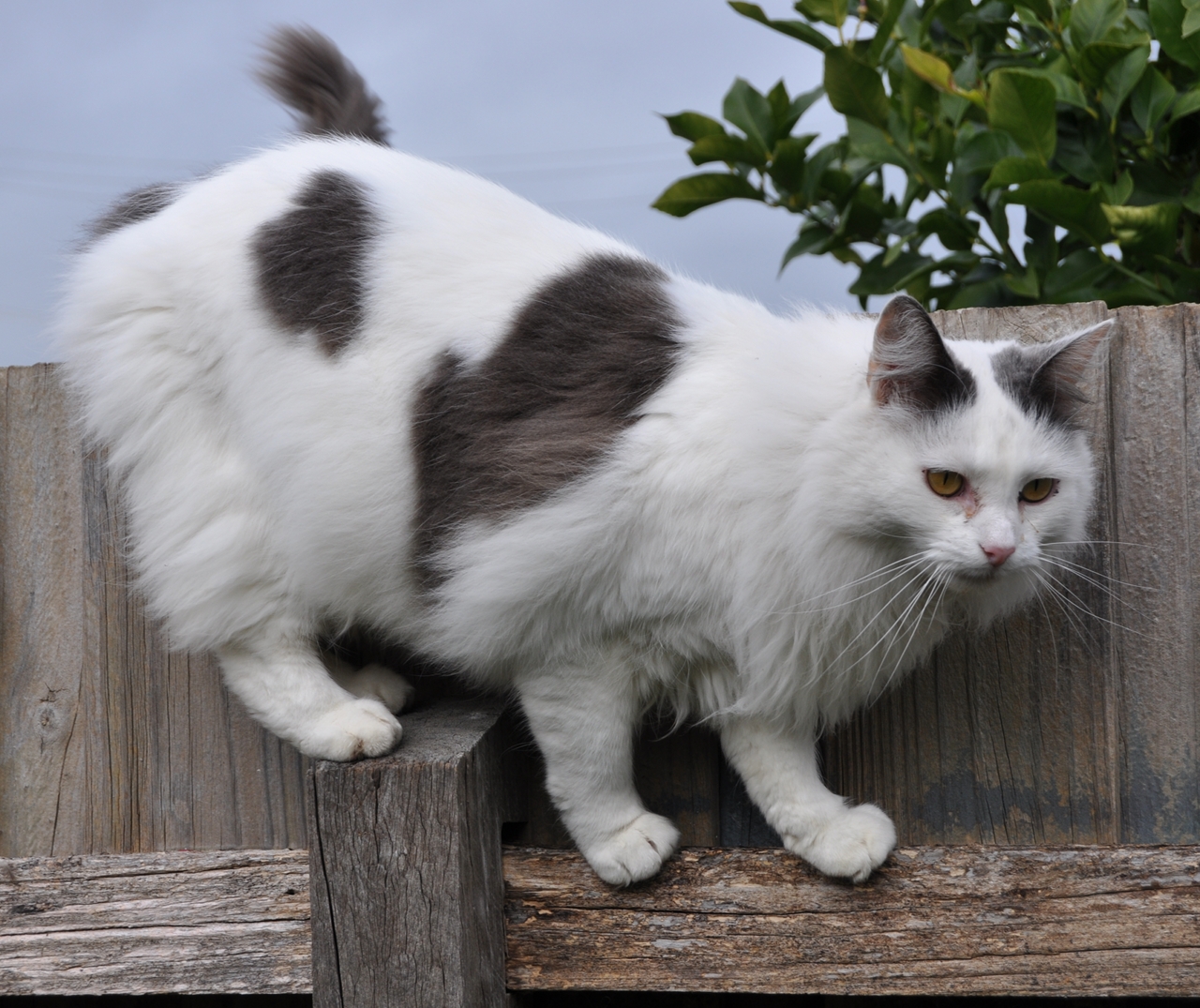 A neighbour's Maine Coone on the fence (22/06/2011 D90 / 18-55 mm DX). 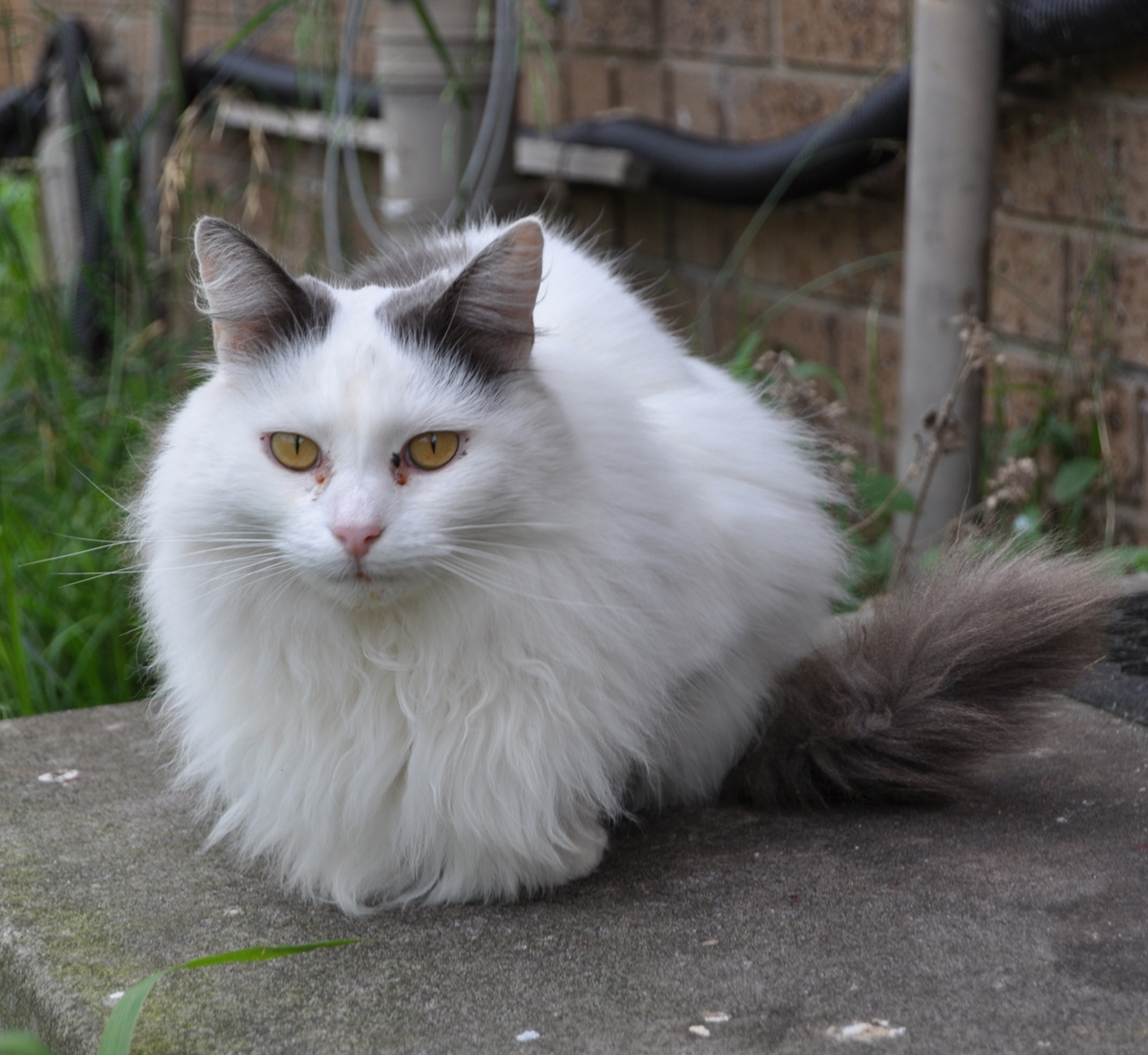 A
neighbour's Maine Coone on the porch
(22/06/2011 D90 / 18-55 mm DX).
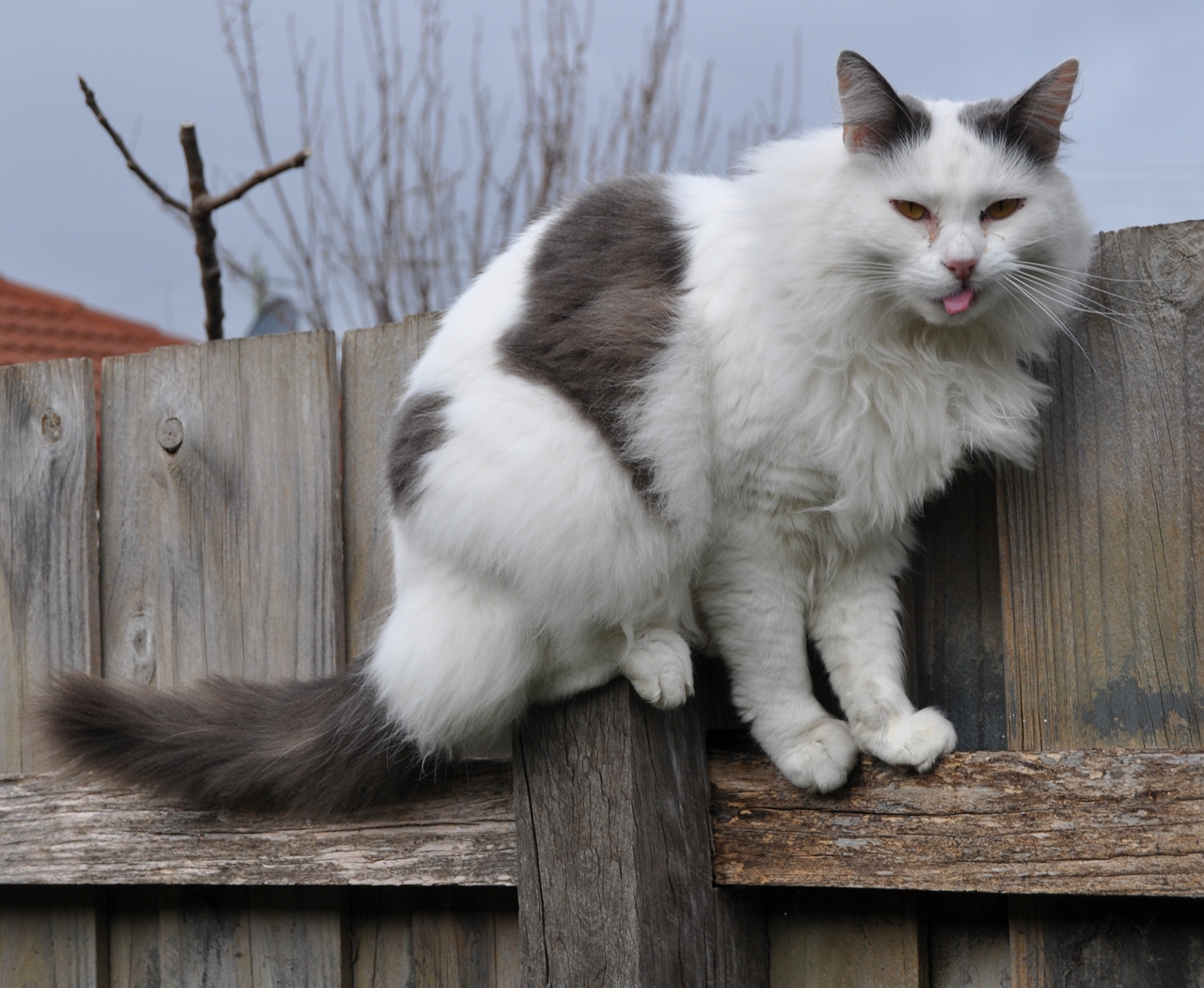 A
neighbour's Maine Coone on the fence
(22/06/2011 D90 / 18-55 mm DX).
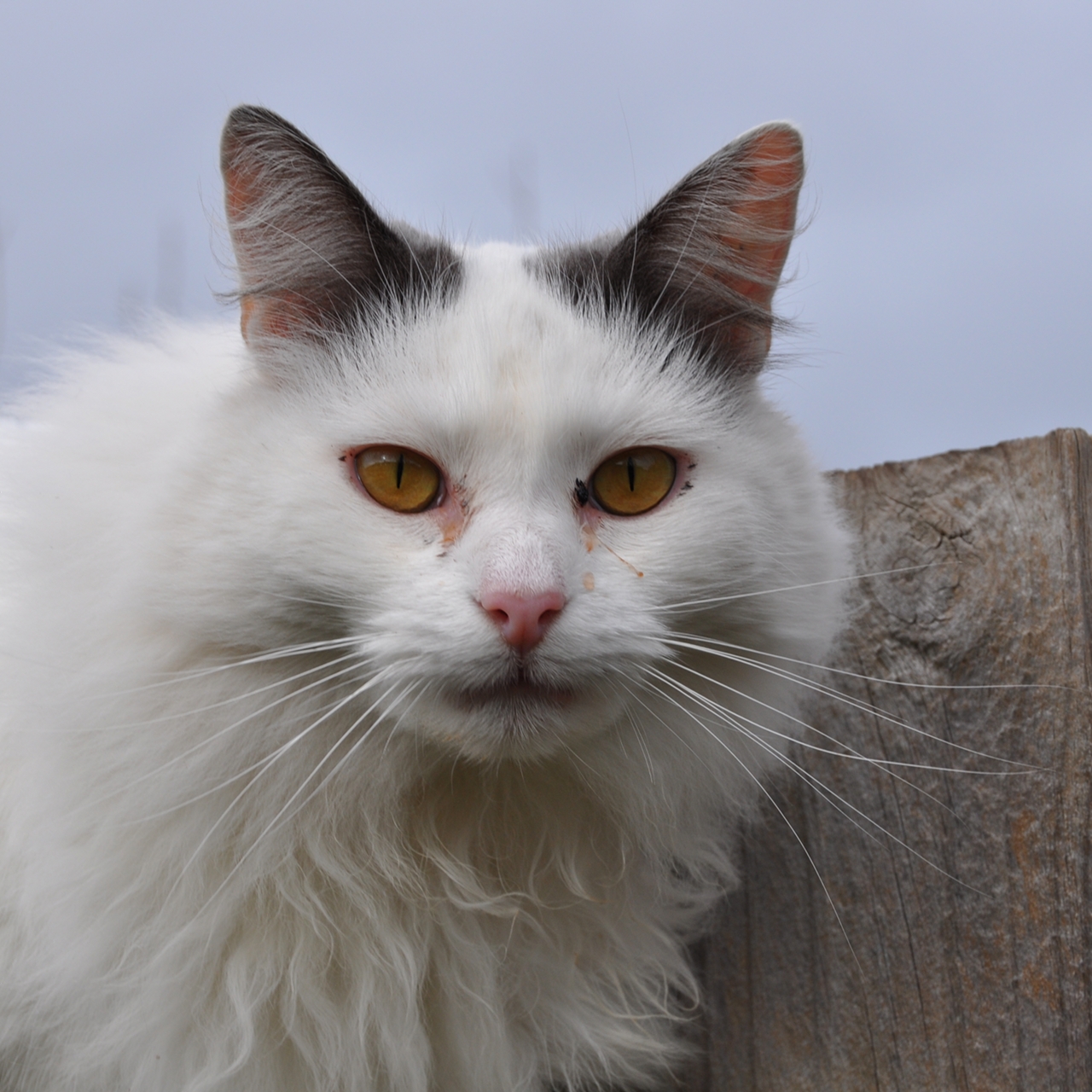 Portrait
of a Maine Coone
(22/06/2011 D90 / 18-55 mm DX).
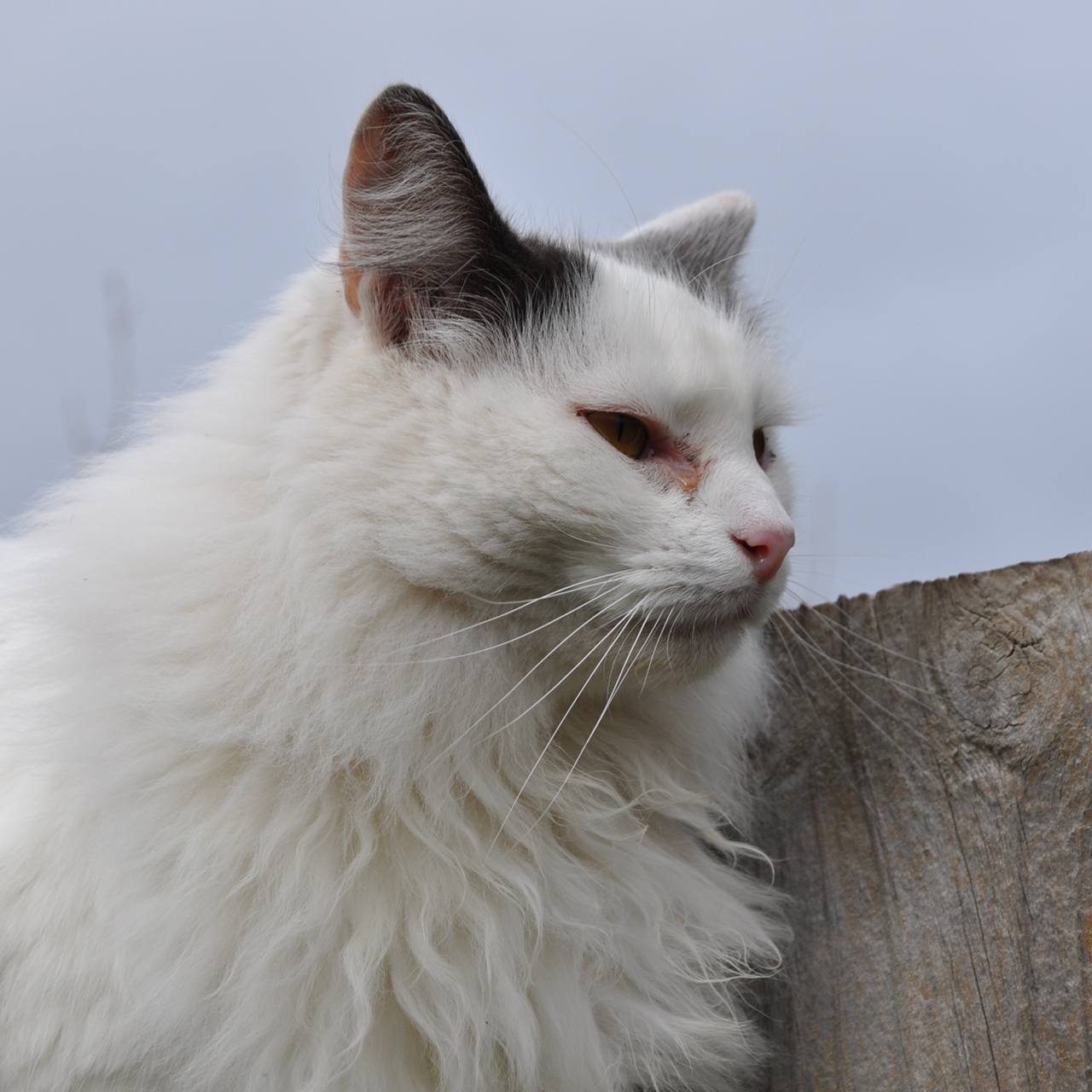 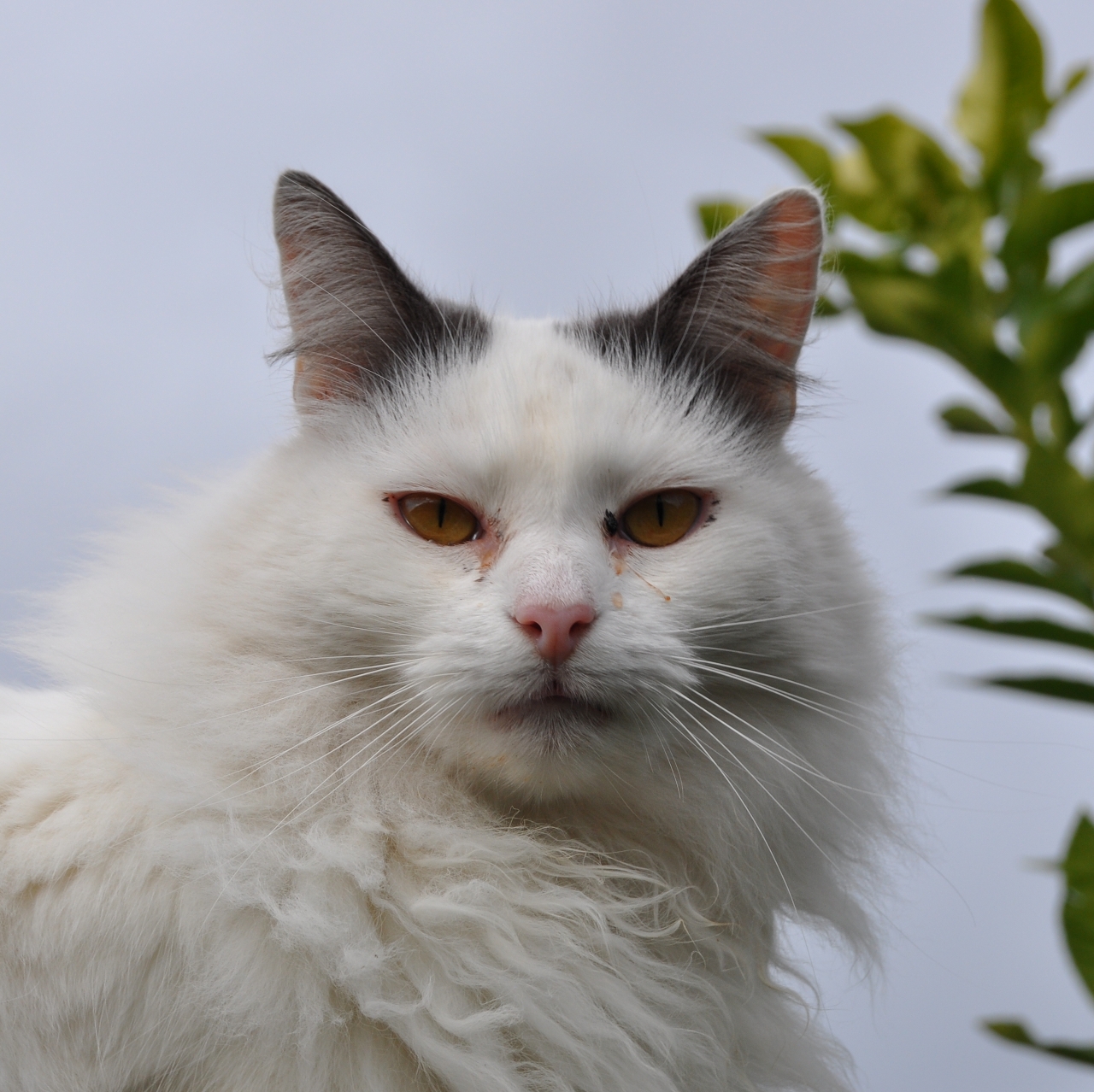 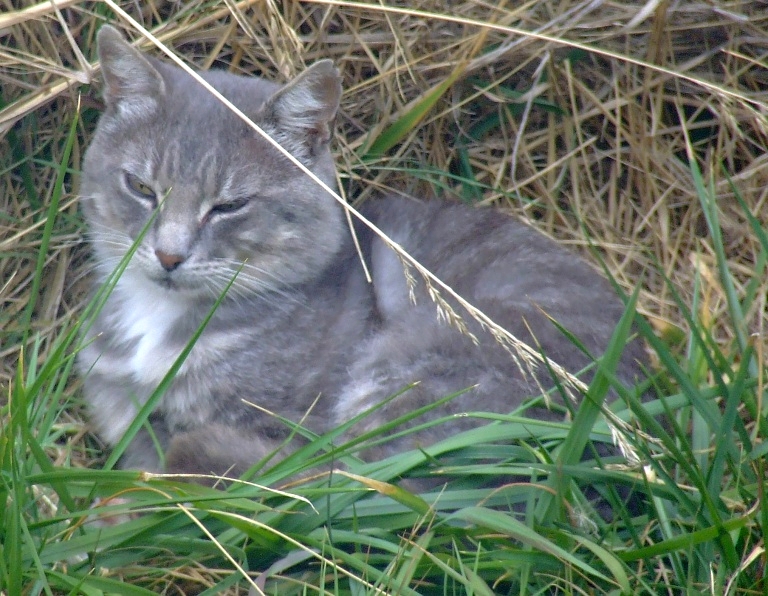 Another
well
fed
specimen
of
the household Moggie, slightly annoyed at being disturbed
(25/04/2007).
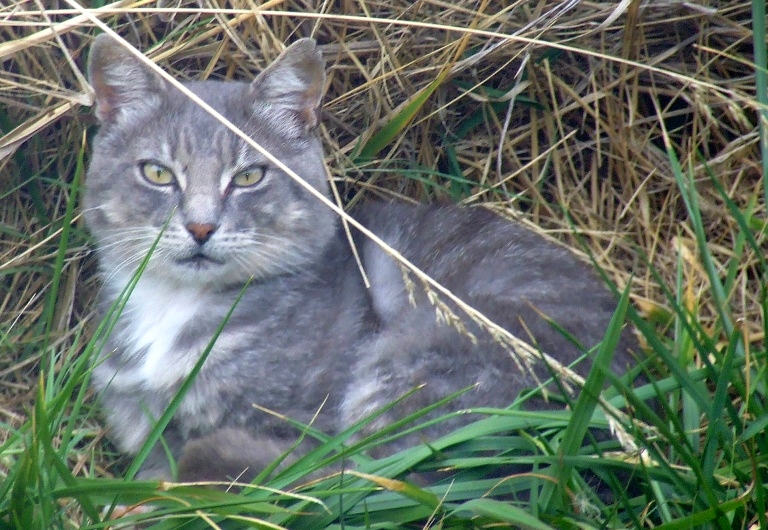 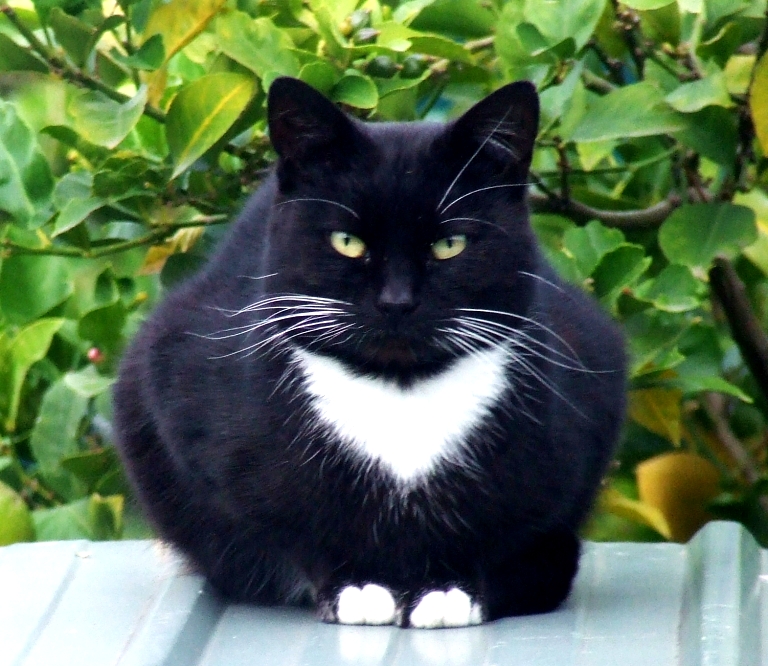 Another
frequent
visitor
poses
for
the
camera (07/05/2007).
|
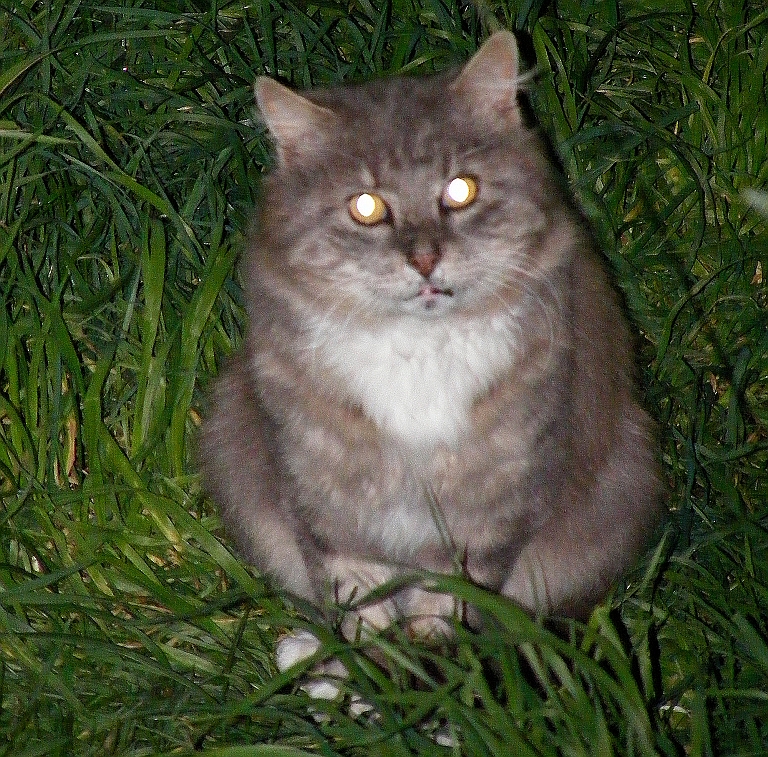 This seven year old Persian cross tomcat
named Smokey, was a frequent but very shy backyard visitor through much
of 2009 (above early May, below late July, 2009). Some weeks after the
lower image was taken, this animal sought refuge in my laundry, crying
for help while dripping blood and pus from a severely infected face
wound and left eye. Due to the wound, it had starved for some time and
suffered severe weight loss. It was immediately taken to the local
veterinary practice. The animal was microchipped, but abandoned by its
previous owners, who would appear to have used a bogus backup telephone
number during registration, and failed to update the registry when
moving out of the suburb. As a result they were impossible to
locate. After 24 hours the cat was sadly put down, as its odds of
survival even if treated were extremely low due to its emaciated
condition - had it sought refuge sooner it could have been saved. A
very sad ending for an attractive, and as I learned, a very
affectionate animal. The lower image actually shows the face wound in
its early stages - not obvious without the zoom lens and enhancement.
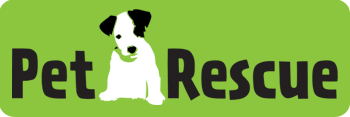 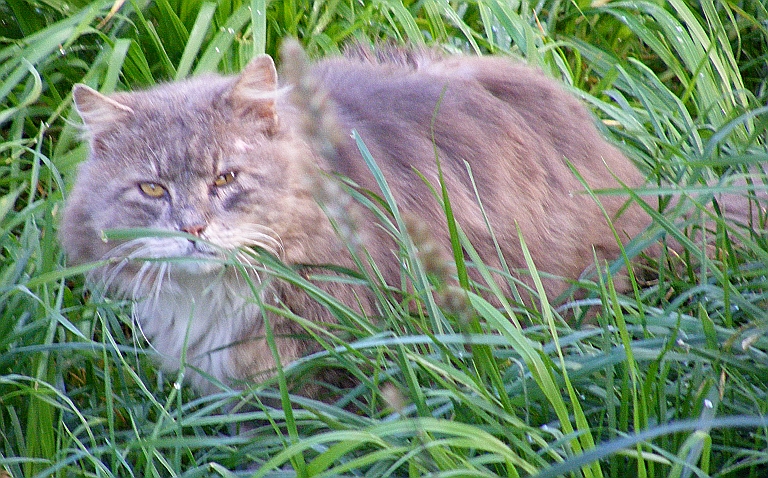 |
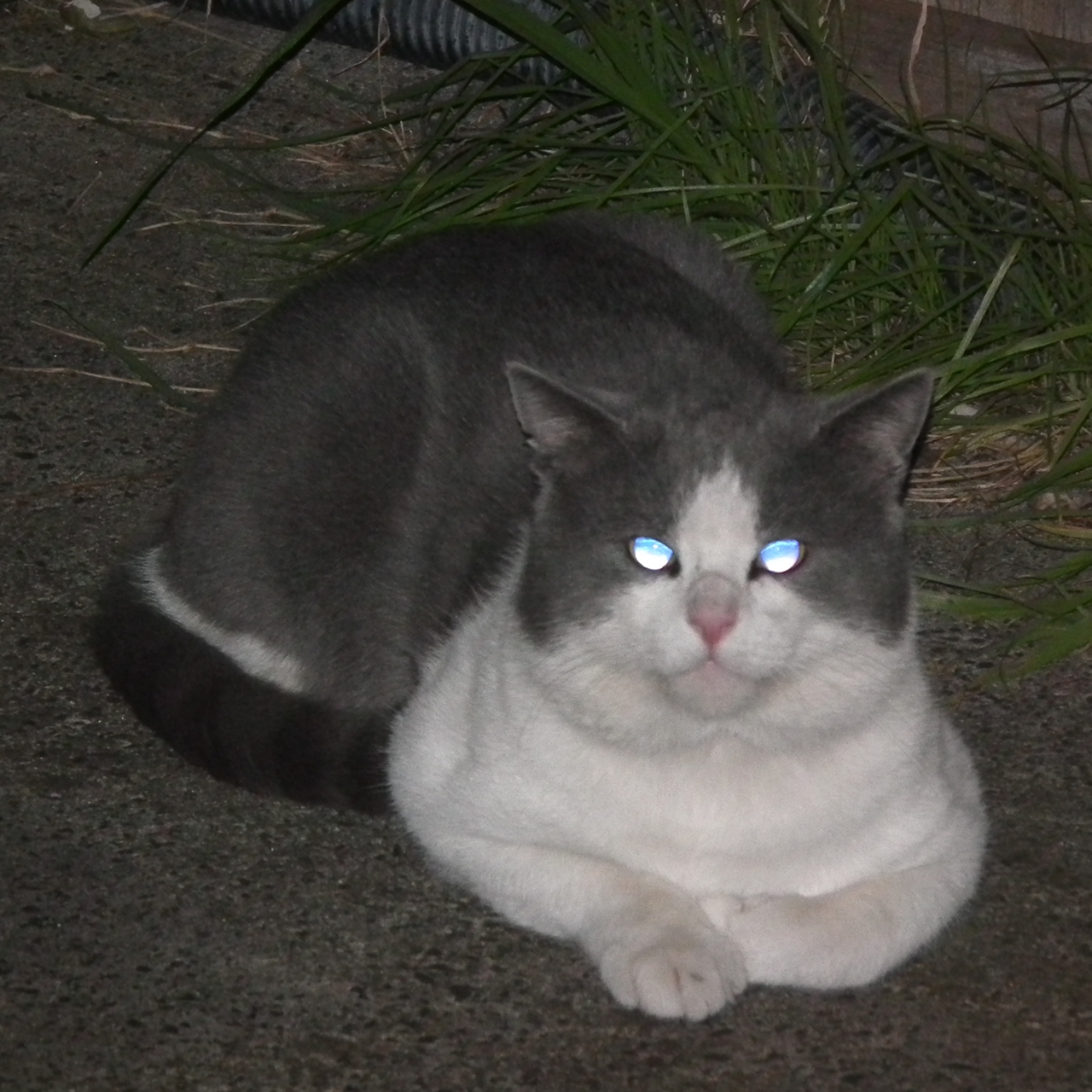 A neighbour's grey and white tomcat visiting (21/06/2011 HS10). 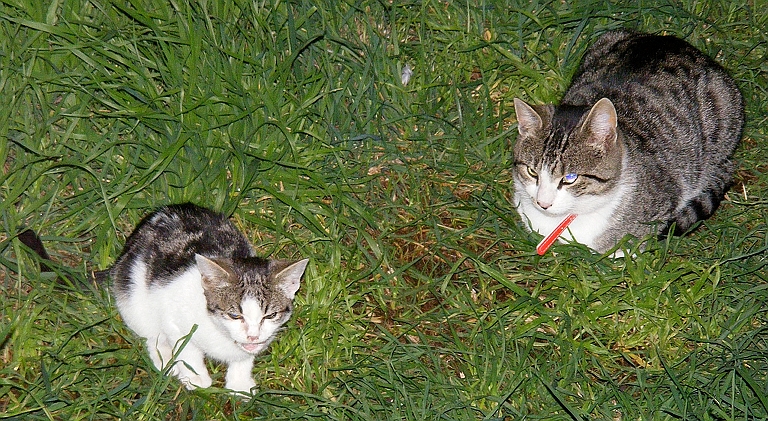 A visiting mother and kitten (07/09/2009). 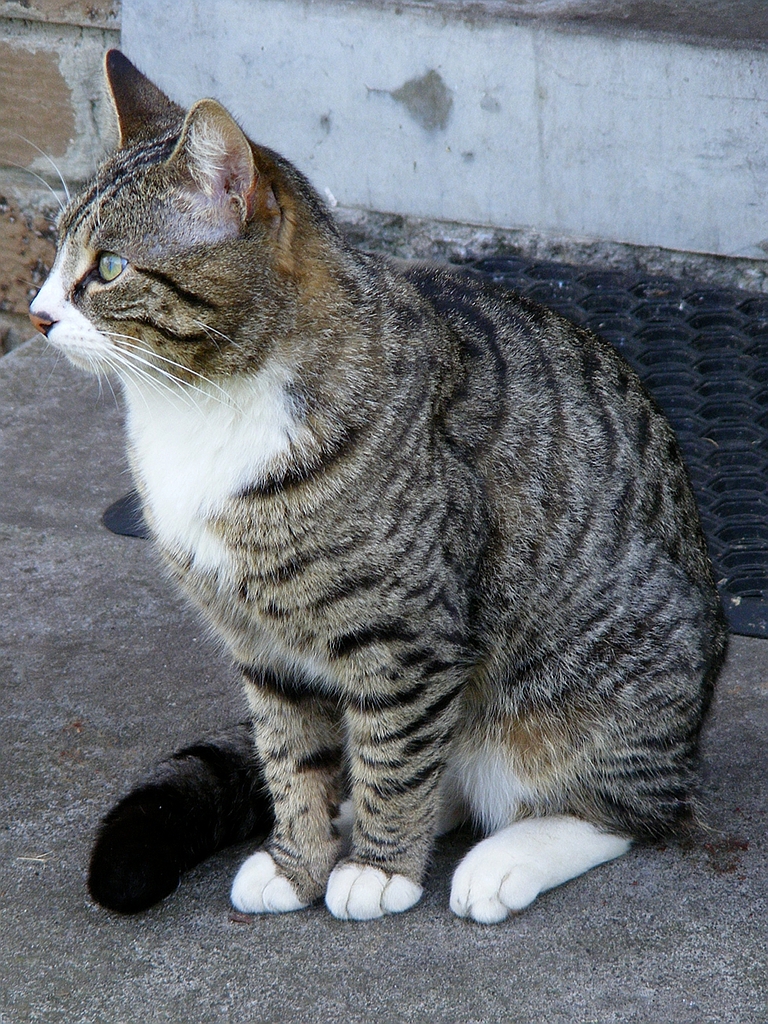 A “mackerel tabby” tomcat, a regular backyard visitor (07/11/2009).  The same “mackerel tabby” tomcat, mid 2012 (Nikkor 50mm f/1.8D / D90). |
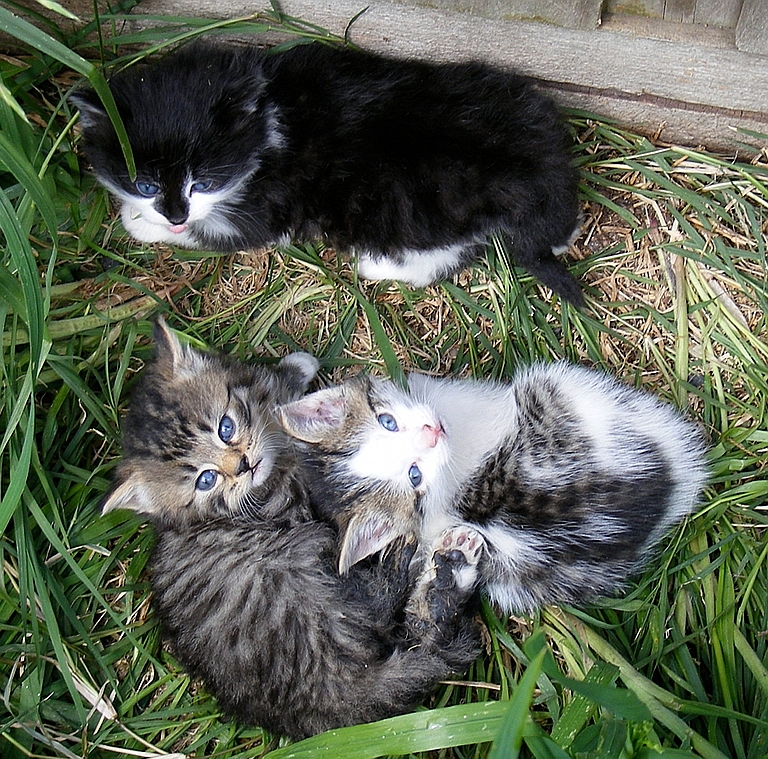 Unexpected
backyard
tenants
arrived
on
the
8th
October,
2009,
aged
around three
and a half weeks. All four and the abandoned mother were fed and
sheltered, and all kittens placed with private owners or pet shops at
8-10 weeks of age (08/10/2009).
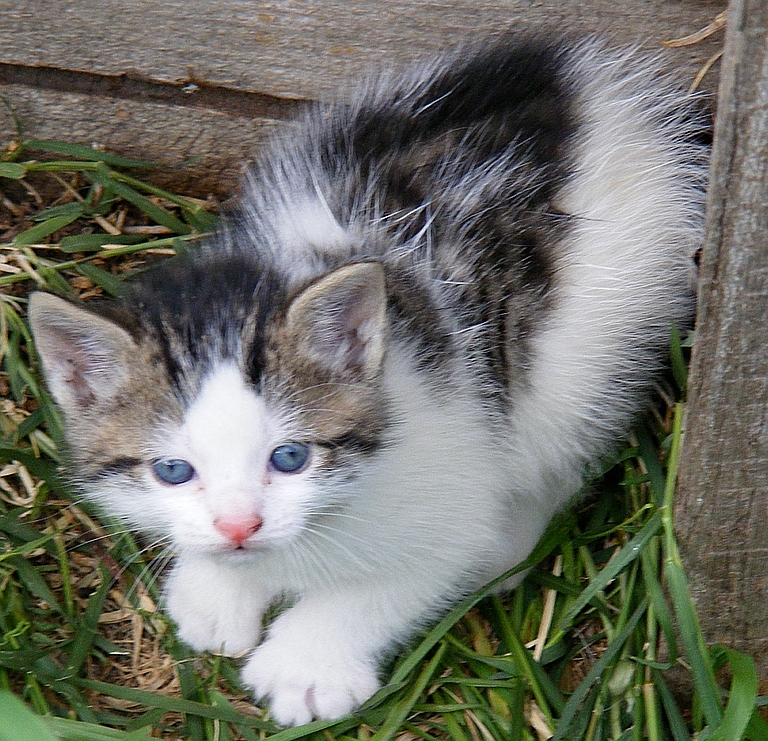 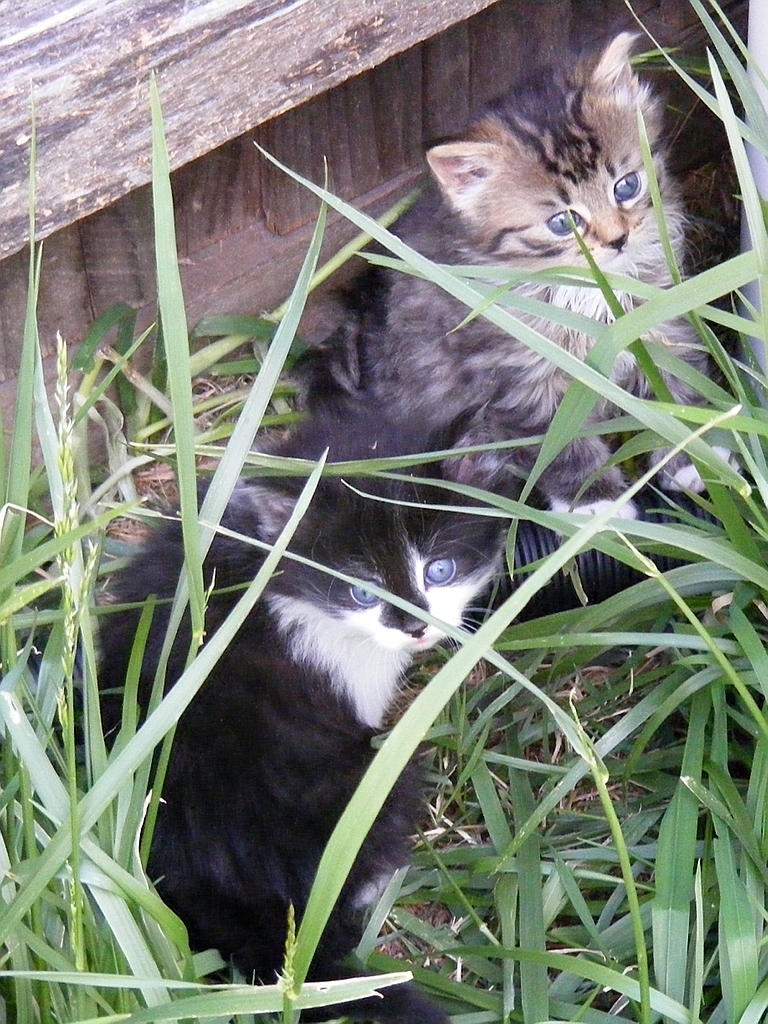 Two of four. The brown kitten was the Alpha female in the litter (11/10/2009) 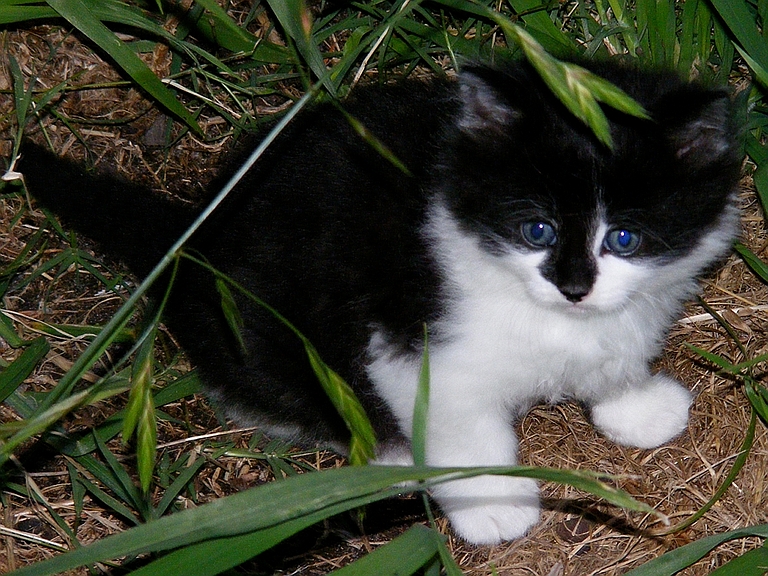 This shy little tomcat went to a private owner at ten weeks of age (16/10/2009) 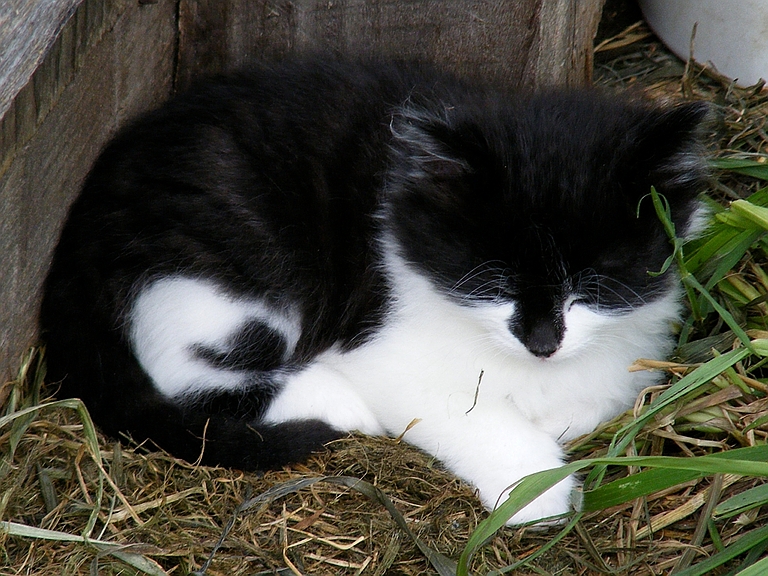 Another image of same (23/10/2009). 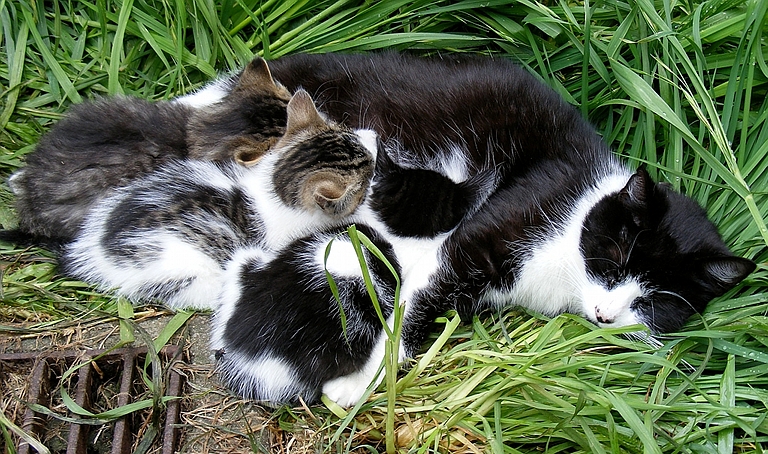 Three out of four plus mother (23/10/2009). 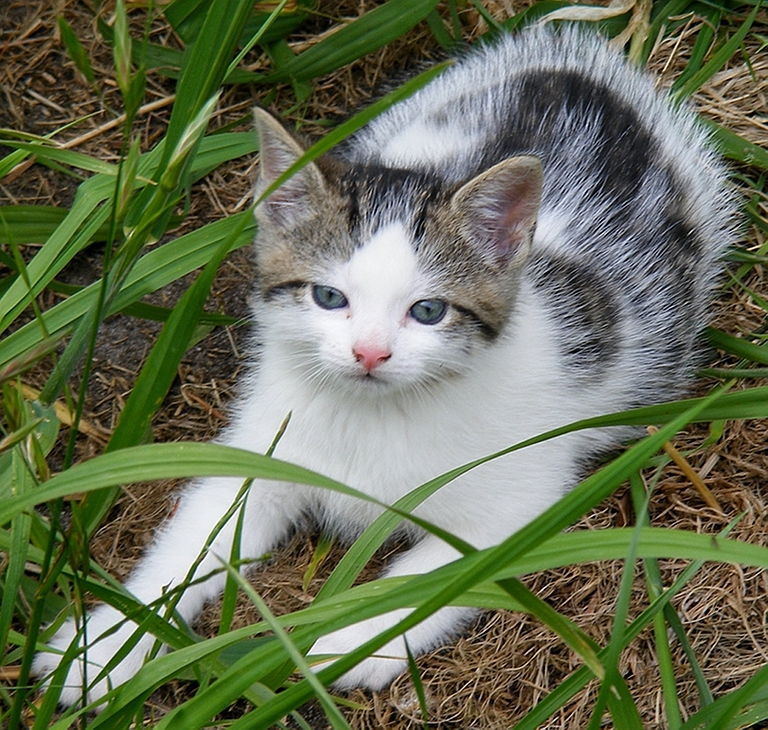 Smaller of two toms (23/10/2009). |
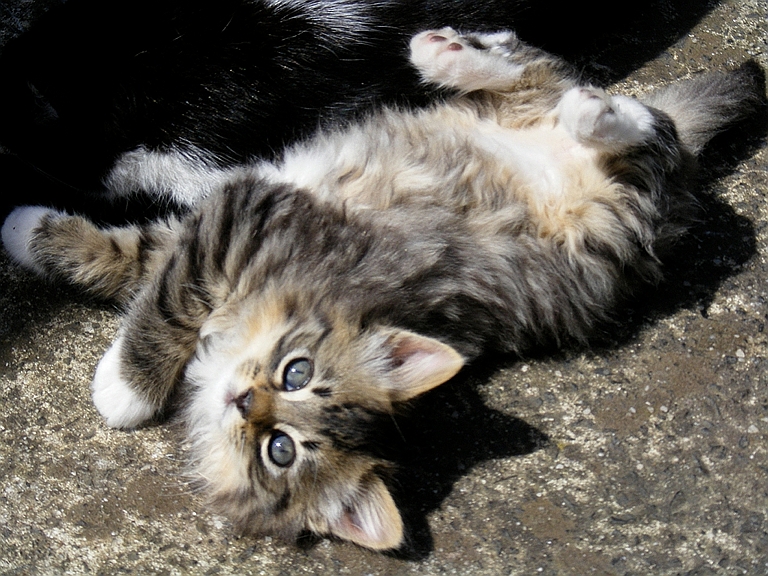 Alpha
female
in
the
litter
(29/10/2009)
|
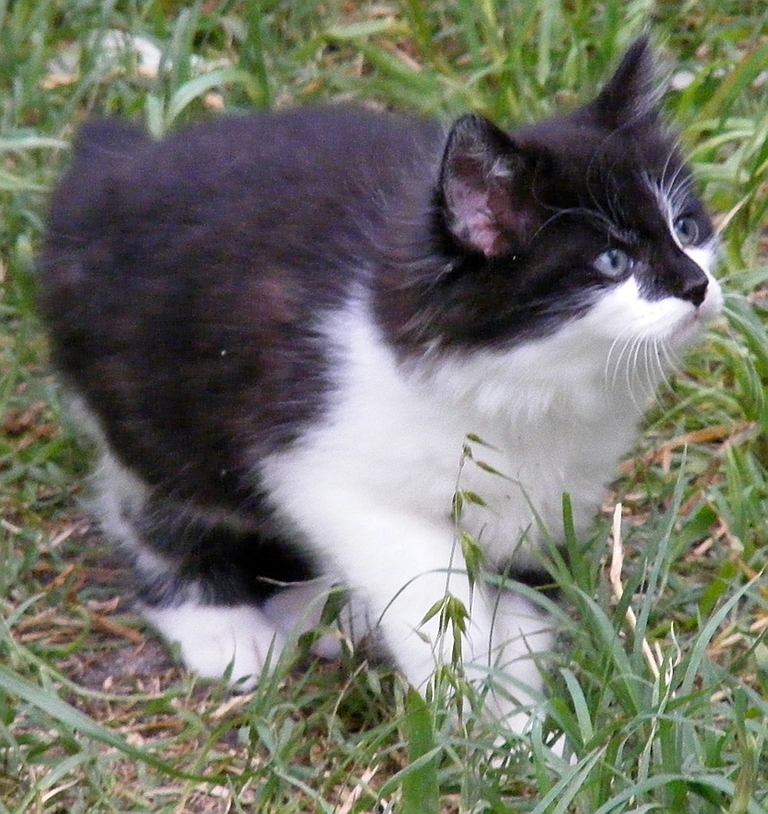 Above,
below,
circa
six
weeks
of
age
(01/11/2009).
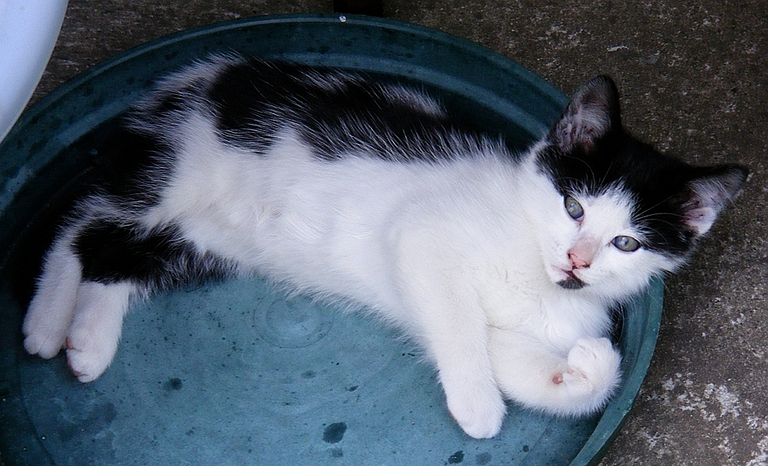 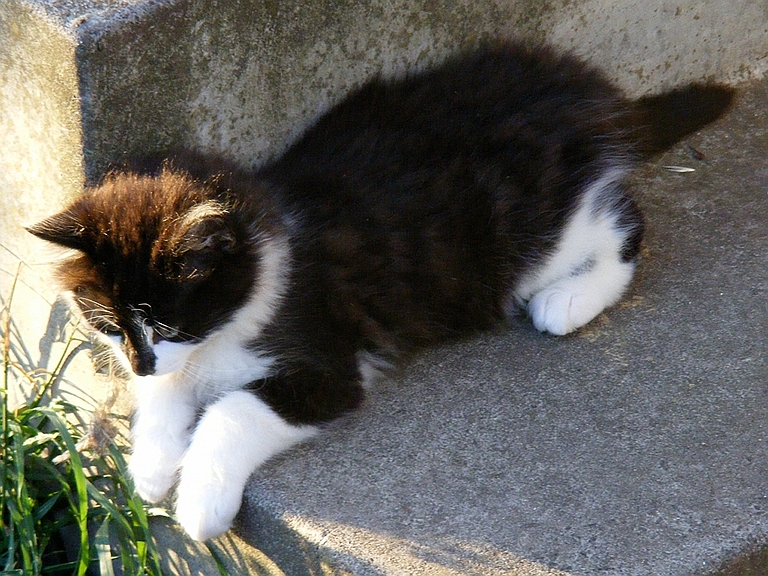 Tomcat
circa
seven
weeks
of
age.
Note
the
ghost
mackerel tabby pattern in the black coat
(09/11/2009).
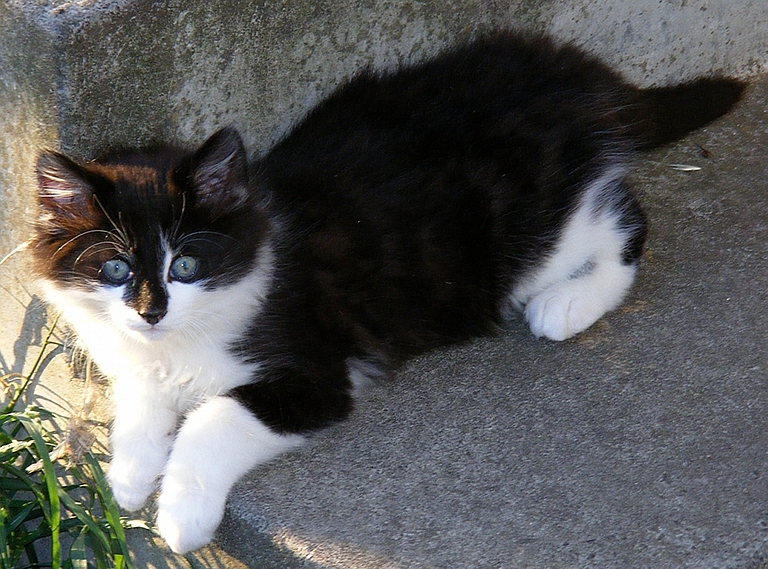 |
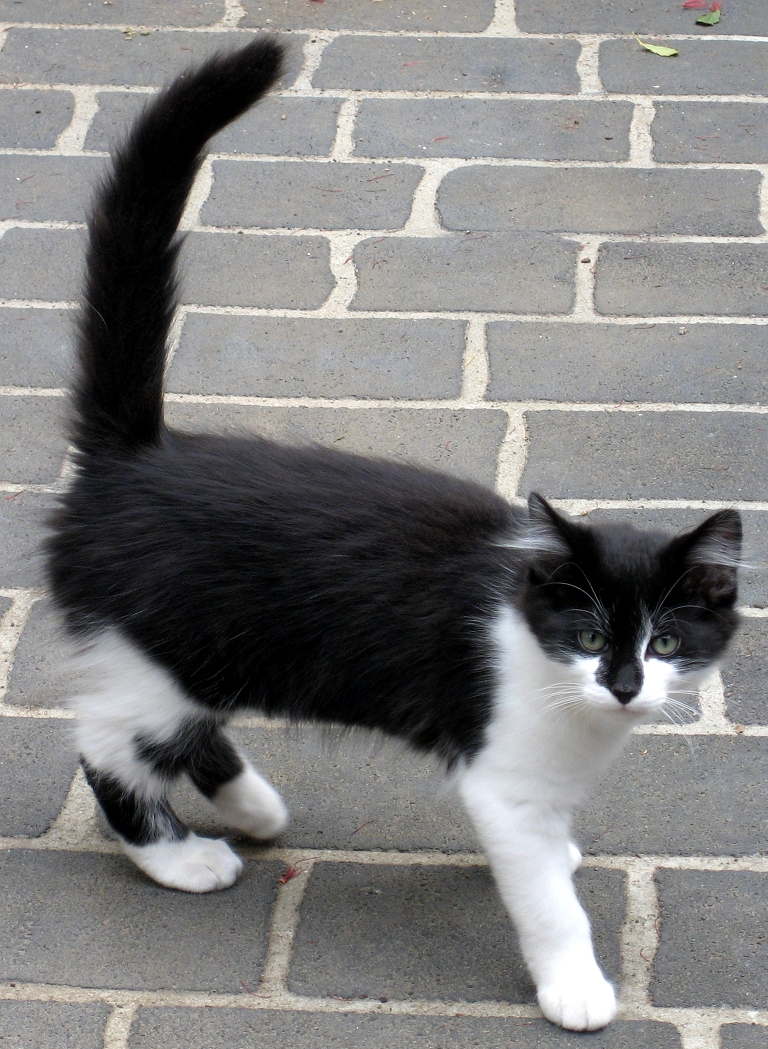 The same tomcat
circa twelve
weeks
of
age (above) and (below) seven months of age (courtesy of new
owner in rural Victoria).
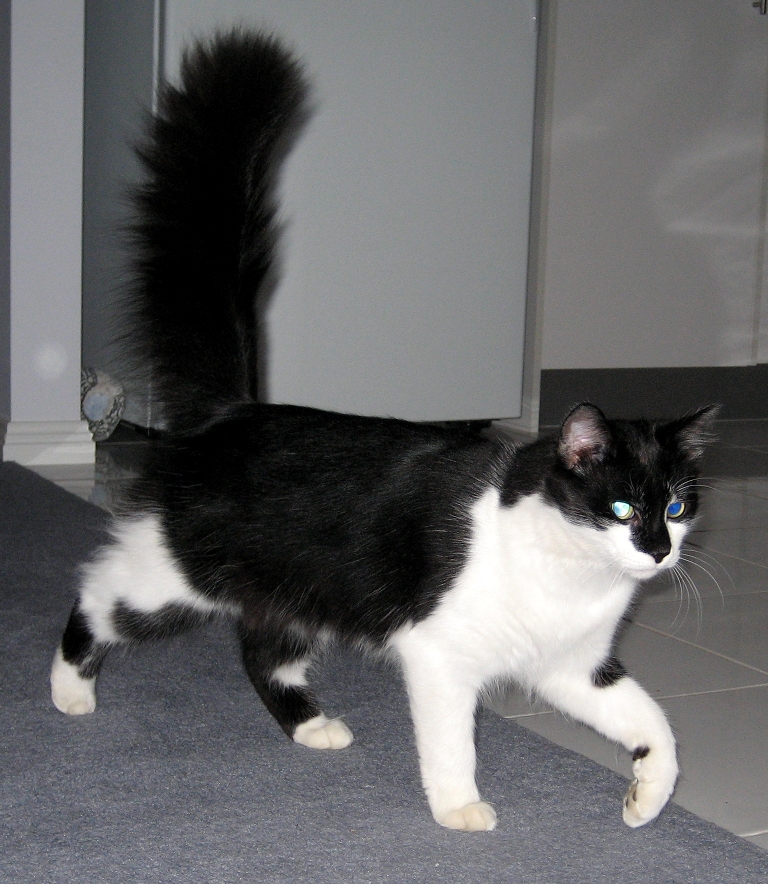 |
Kitten Development 1 - 8 Weeks (Jan - Feb 2010) |
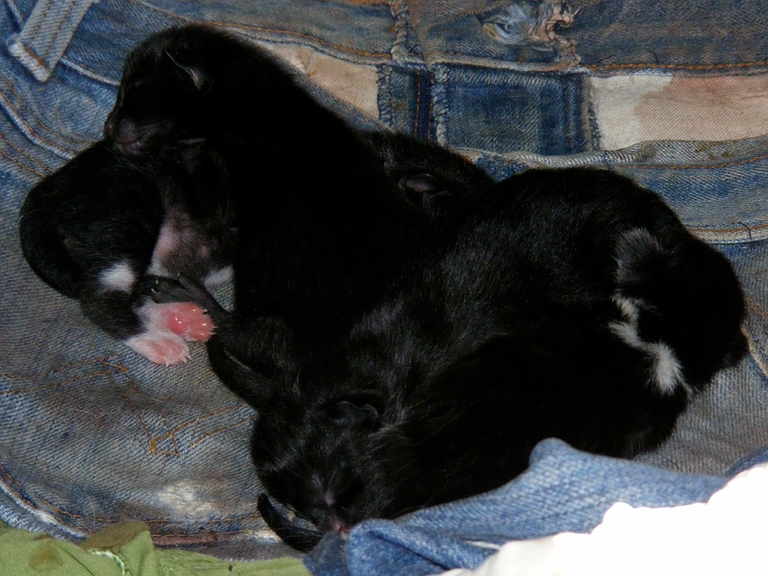 One
day old
kittens (05/01/2010).
|
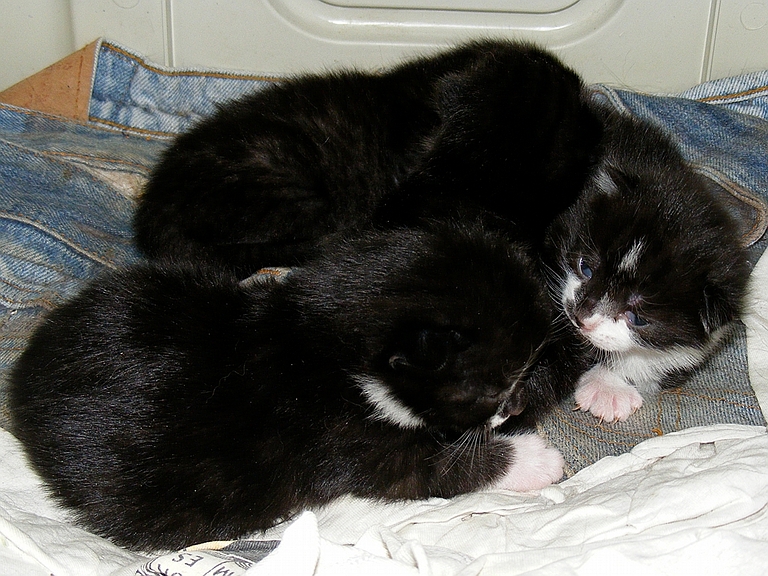 Kittens
at
10
days
(15/01/2010).
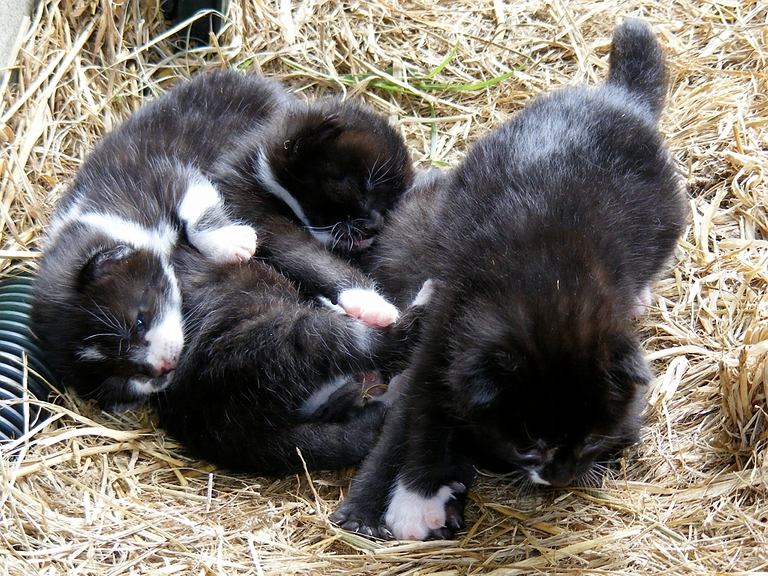 Kittens at two weeks (19/01/2010). |
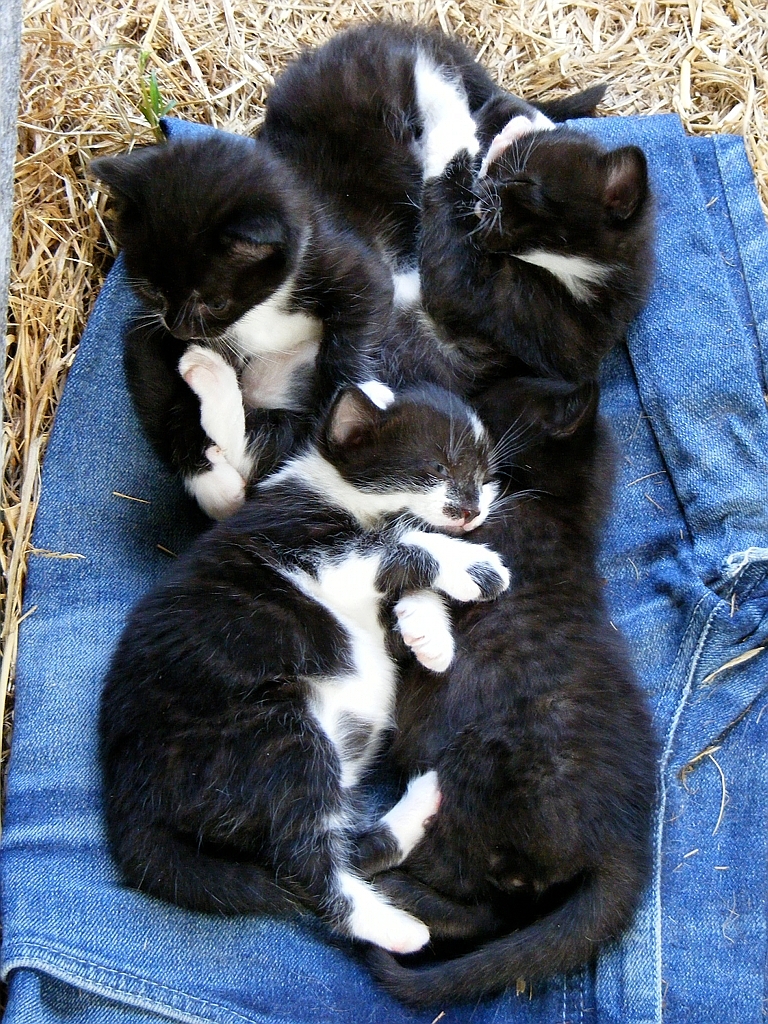 Kittens
at
three
and one half weeks (29/01/2010).
|
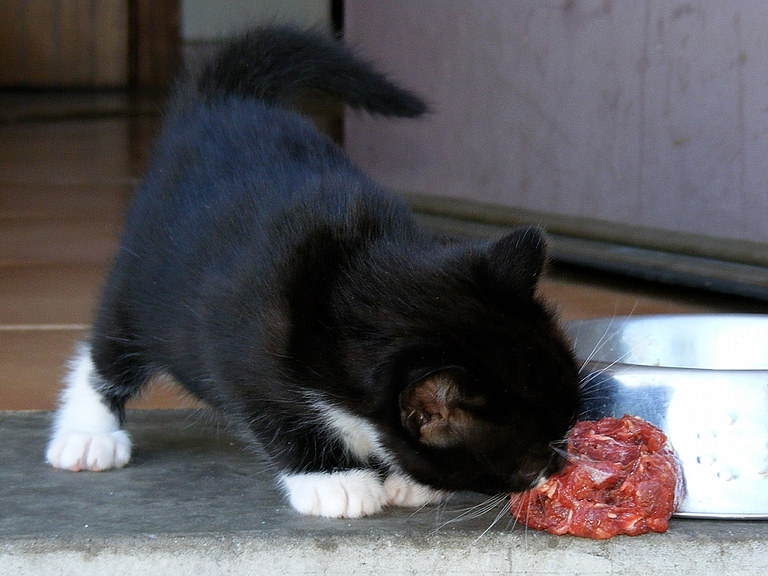 Kitten
at
four
weeks (06/02/2010).
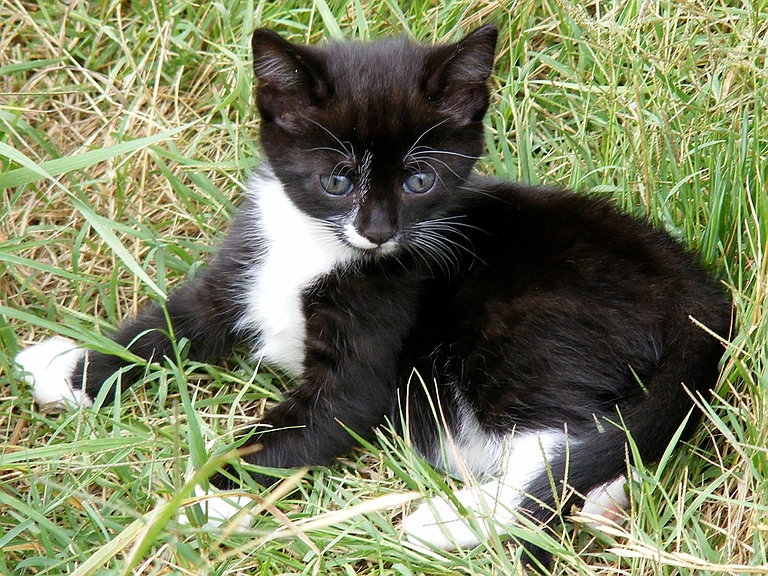 Above, below: kittens at five and one half weeks (14/02/2010). 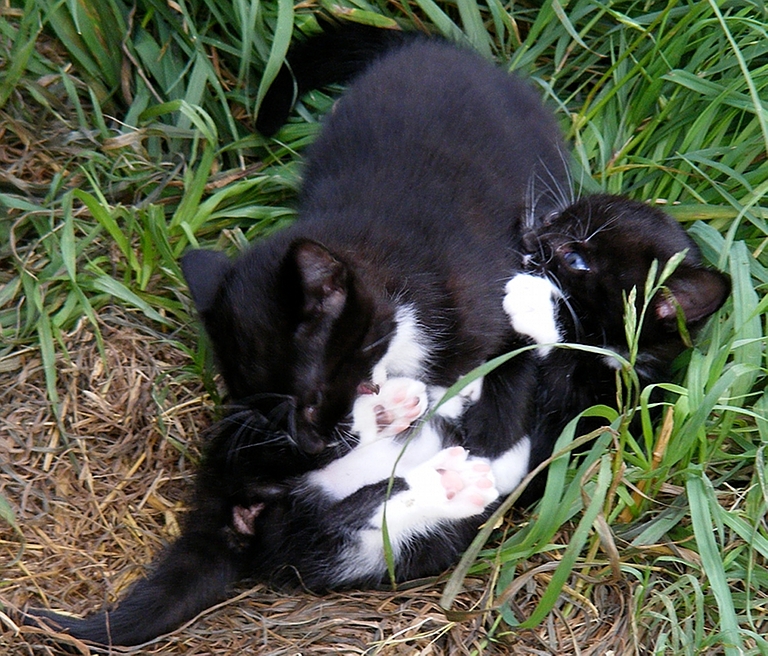 |
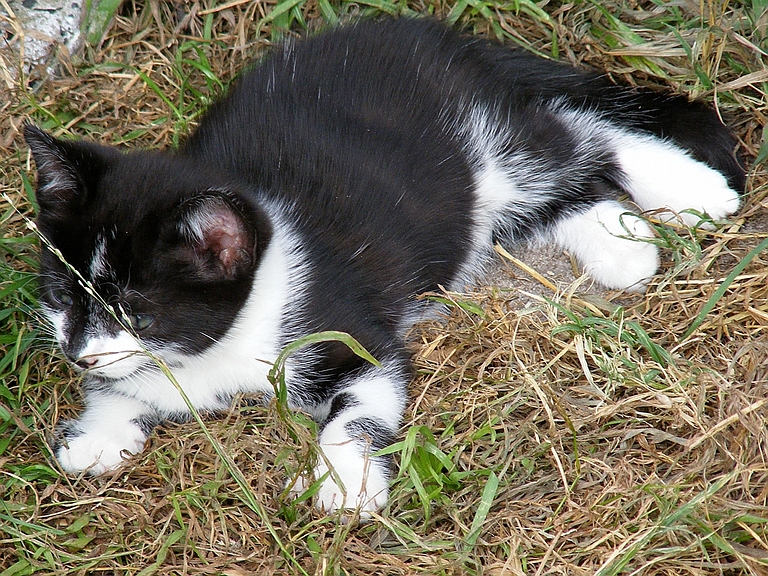 Above,
below:
kittens
at six and one half weeks (29/01/2010).
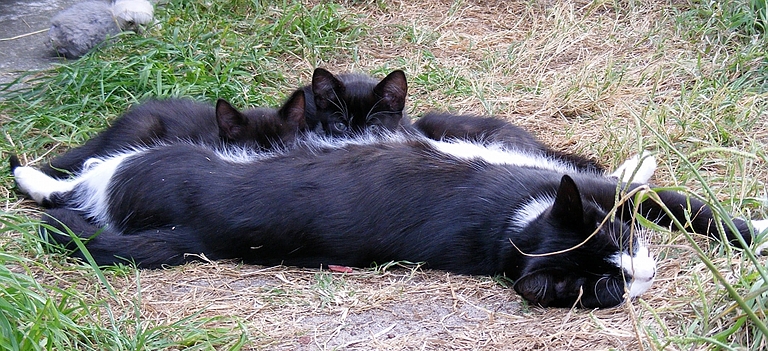 |
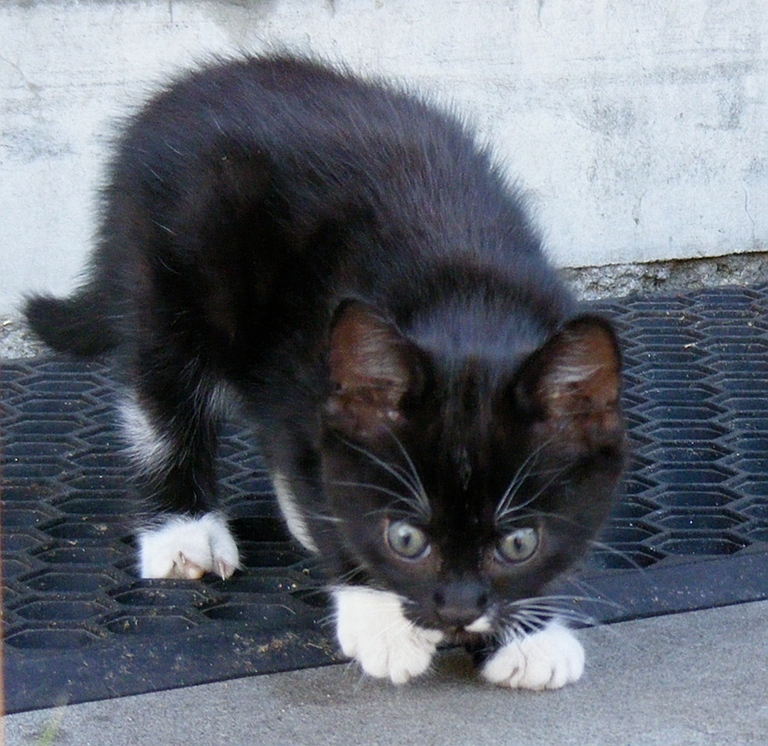 Kitten
at
seven
weeks (25/02/2010).
|
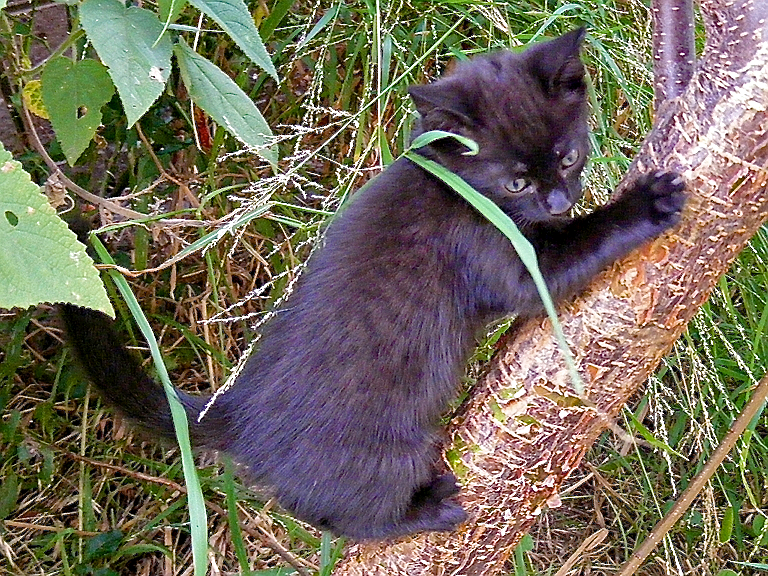 Above,
below:
kittens
at eight weeks. Weight between 900 - 1,100 grams each
(02/03/2010).
|
|
Australian Suburban Wildlife |
| Other
Interesting
Wildlife
Sites http://www.wildlife-photo.org/  |
|
|||||||||||||||
| Artwork and text ¿ 1994 - 2010 Carlo Kopp; All rights reserved. |
| $Revision: 2.279 $ |